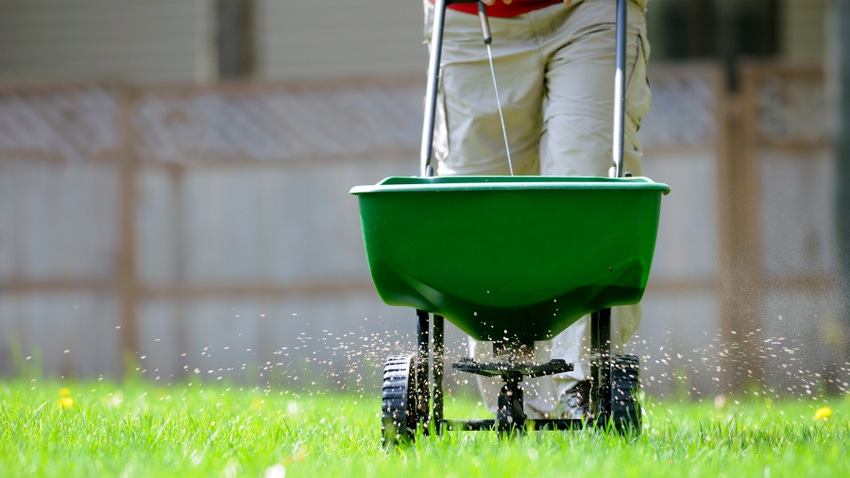
The first blades of green grass emerging from the ground are a surefire way to know that spring and warmer weather have arrived. Taking proper steps in the spring can help ensure a green, healthy lawn persists all summer.
Experts from South Dakota State University share the top areas to focus on for spring lawn care.
1. Aeration. From the weight of winter show, and soil freezing and thawing, the first step to lawn prep should be breaking up the compaction that occurred over the winter. Use a hollow-core tined aerator to ensure the top 6 to 8 inches of topsoil are completely thawed. Pull soil cores between 2 and 3 inches deep in your lawn. This will help the soil and roots breathe after the long winter.
2. Fertilizer. Before purchasing fertilizer, take a good look at your lawn. Are there weeds popping up? Do you see bare spots? Taking photos of the problem areas in your lawn and showing knowledgeable staff at garden centers or your local Extension office can help you determine which fertilizer to use.
The three main types of fertilizer are granular, liquid and slow release. While all of the different options might seem overwhelming, checking the label for application directions and recommendations will help in your selection. If you applied a fall fertilizer, applying 0.75 to 1 pound of actual nitrogen per 1,000 square feet of lawn should be enough. Without that fall application, plan to apply even more nitrogen in spring fertilizers.
SDSU Extension suggests conducting a soil sample for the most accurate recommendations of what is needed in spring fertilizer applications.
3. Weed control. Two main weed problems in lawns are crabgrass and an assortment of broadleaf weeds. If you saw crabgrass last year, expect to see it again. The best treatment for crabgrass is a preemergent, applied during the two-week period from late April into May. Timing for this application is crucial, so it won’t disrupt the germination of new grass seeds.
Broadleaf weed controls generally contain mixtures of different herbicides to provide better control. Weed and feed products can be applied to established lawns but must be used when the lawn is damp from dew or a watering for best results. Spray herbicides may give more consistent control; however, wind speeds and drifting must be considered with this method. Always follow all label directions for any pesticide application.
4. Mowing. While no one in the Northern Plains is currently cutting their grass, now is the time to have your mower tuned up and ready for spring. Sharpening or replacing mower blades should be done once a year to minimize leaf shredding and ripping. Sharp blades help reduce the chance of introducing fungal diseases into your lawn.
Don’t mow more than a third of the turf per cutting, or mow when the grass is wet. It might be tempting to only cut your lawn once a week. However, in the spring, grass that is full of energy and growing quickly might require two cuts per week. Moving into summer, you may see growth start to slow as cool-season grasses do not thrive in the heat.
Following these lawn care practices will set your lawn up for a lush summer and help it thrive even in times of drought. For more lawn and garden care, check out SDSU Extension’s Garden & Yard website.
SDSU Extension contributed to this article.
About the Author(s)
You May Also Like






